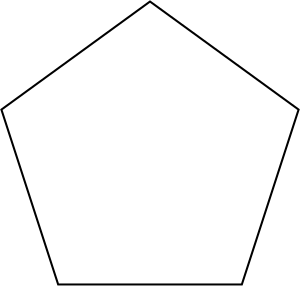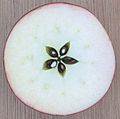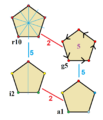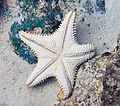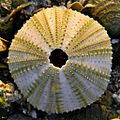Pentagon facts for kids
A pentagon is a polygon with five edges. It is defined by five points, which are all on a plane. If all the edges have the same length and the angles at the corners are all 108°, the pentagon is called regular. Pentagons also occur in nature: Fruits of the Okra are pentangular. The flowers of Ipomoea are pentagular. In chemistry, many Cyclic compounds are pentangles: Cyclopentane and Furan are examples for this. In architecture, many bastions are pentangular: Bourtange, in the Netherlands has been completely restored, and is a pentangle. The Citadel of Lille, Nyenschantz, near St. Petersburg, or the Citadel of Pamplona are . The Villa Farnese is a palace in the form of a pentagon, so is the castle of Nowy Wiśnicz. The Pilgrimage Church of Saint John of Nepomuk near Žďár nad Sázavou also uses a pentangular design.
Examples of pentagons
Plants
-
Pentagonal cross-section of okra.
-
Morning glories, like many other flowers, have a pentagonal shape.
-
Starfruit is another fruit with fivefold symmetry.
Animals
-
A sea star. Many echinoderms have fivefold radial symmetry.
-
An illustration of brittle stars, also echinoderms with a pentagonal shape.
Artificial
-
The Pentagon, headquarters of the United States Department of Defense.
-
Home plate of a baseball field
Images for kids
-
A sea star. Many echinoderms have fivefold radial symmetry.
-
Another example of echinoderm, a sea urchin endoskeleton.
-
A Ho-Mg-Zn icosahedral quasicrystal formed as a pentagonal dodecahedron. The faces are true regular pentagons.
-
A pyritohedral crystal of pyrite. A pyritohedron has 12 identical pentagonal faces that are not constrained to be regular.
-
Home plate of a baseball field
See also
 In Spanish: Pentágono para niños
In Spanish: Pentágono para niños


